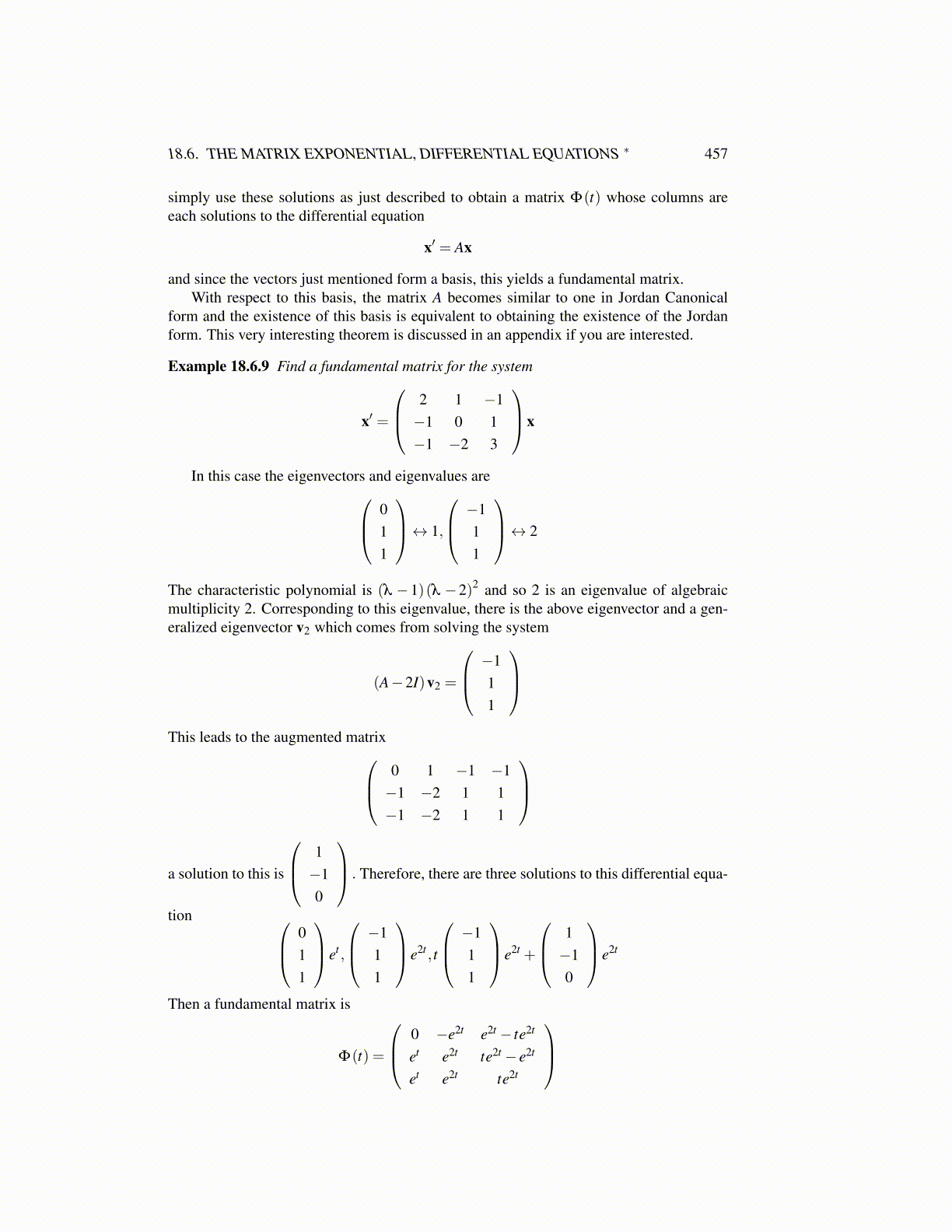
18.6. THE MATRIX EXPONENTIAL, DIFFERENTIAL EQUATIONS ∗ 457
simply use these solutions as just described to obtain a matrix Φ(t) whose columns areeach solutions to the differential equation
x′ = Ax
and since the vectors just mentioned form a basis, this yields a fundamental matrix.With respect to this basis, the matrix A becomes similar to one in Jordan Canonical
form and the existence of this basis is equivalent to obtaining the existence of the Jordanform. This very interesting theorem is discussed in an appendix if you are interested.
Example 18.6.9 Find a fundamental matrix for the system
x′ =
2 1 −1−1 0 1−1 −2 3
x
In this case the eigenvectors and eigenvalues are 011
↔ 1,
−111
↔ 2
The characteristic polynomial is (λ −1)(λ −2)2 and so 2 is an eigenvalue of algebraicmultiplicity 2. Corresponding to this eigenvalue, there is the above eigenvector and a gen-eralized eigenvector v2 which comes from solving the system
(A−2I)v2 =
−111
This leads to the augmented matrix 0 1 −1 −1
−1 −2 1 1−1 −2 1 1
a solution to this is
1−10
. Therefore, there are three solutions to this differential equa-
tion 011
et ,
−111
e2t , t
−111
e2t +
1−10
e2t
Then a fundamental matrix is
Φ(t) =
0 −e2t e2t − te2t
et e2t te2t − e2t
et e2t te2t